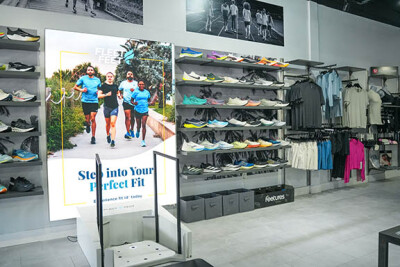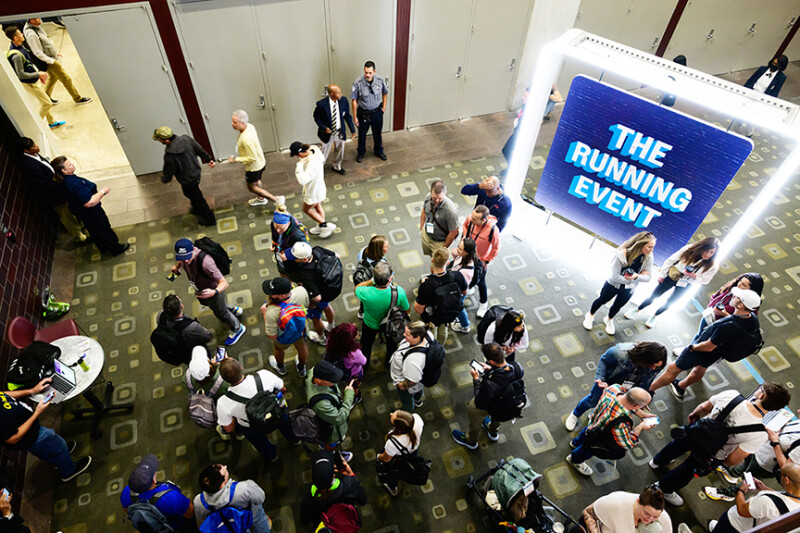Do male runners consider themselves more serious about speed than their women counterparts? If you look at the statistics on who’s buying the latest high-performance shoes, the answer is an emphatic yes.
Figuring out why that is could be a key to more targeted inventory and sales at run specialty retailers.
The data comes from the recently released Fleet Feet Running Report, which took a deep dive into who is buying what type of shoe. Analyzing data from a commissioned YouGov survey, the report’s participants were 61 percent women, 39 percent men. But a deeper dive into who purchases high-performance models – the plated shoes and higher end training shoes – reveals a flipped scenario: men buy these models in a 60/40 split with women, according to the survey’s answers.
The results only lead to more questions. Why do men self-identify as more serious runners than women? Is it marketing? Product design? Women still playing a game of catch-up to their male counterparts stemming from decades of exclusion in the sport?
Caroline Bermel, product marketing specialist at Fleet Feet, sees it as a mixture of factors. “Women prioritize fit, feel, injury prevention and versatility over the technology,” she explains. “But the narrative is evolving.”
If that’s the case, then retailers have an untapped market at their disposal.
Closing the Gender Gap
For some perspective on the male skew toward high-performance shoes, there’s some value in a look back at their history. “When plated shoes first came out, they were available only in unisex sizing, which means men’s sizing,” explains Bermel. “That provided an extra barrier for women of having to figure out what size they are in men’s shoes.”
That kind of gender gap has long-standing implications not only in buying habits, but in how women look at themselves and, ultimately, how they perform. Not all high-performance shoes have added women’s sizing, even today. That could be a mistake.
In 2025, with women starting to close race participation gaps in several distances, it behooves retailers to consider how they sell plated shoes. Strava’s Year in Sport report shows that in 2024 there was nearly equal participation between genders at the half marathon distance, for example. When it comes to snagging crowns for fastest segments, Strava’s data revealed that women came out on top 20 percent more often than men. “Things are shifting and more women are seeking out this space,” says Bermel.
Pete Mulligan, owner of Falls Road Running Store in Baltimore, MD, says that when plated shoes first arrived on the scene, buyers in his store did skew male. “But as the updated models came along and the older models went on sale, women started trying them,” he says. “And once they got a taste for them, they started gobbling them up.”
Mulligan believes that in the post-pandemic era – and with social media fueling the fire – runners of all genders and paces are placing greater value in a high-performance shoe. “This is especially true of runners looking to qualify for Boston,” he says. “But even back-of-packers are buying them now, because they want any advantage they can get.”
The Cost Difference
He does see a difference in how much women and men are willing to pay for the higher performing shoes, however.
“Women are smart shoppers and don’t want to pay top dollar, so they wait for the sales or the lower priced models,” Mulligan explains. As a result, Mulligan keeps a range of high-performance shoes in stock.
Bermel says that Fleet Feet has adopted a policy of asking every runner what their goal is when they enter the store. “That can help direct women runners toward the higher performance shoes, if speed is what they’re after,” she says. “Brands are aware that women make up a substantial part of their customer base, so they’re incentivized to get women into these shoes.”
Charlotte Walsh owns Charles River Running in Boston and her customer base is largely made up of recreational runners. There she has largely stopped carrying plated shoes. But she fields calls about those models, and generally finds those callers are male. In-store – and at her store’s weekly runs and events – the crowd is heavily male. Women runners, she finds, “are out there to be social, not necessarily to get fast.”
As women catch up to men in race participation, however, their buying habits will likely follow. The Strava report showed that regardless of gender, shoes like Nike Vaporfly dominate all others, and 44 percent of marathoners ran in carbon-plated technology in 2024.
With women catching men in New York City Marathon participation this year, retailers have a big market at their disposal going forward. “We follow what our customers ask for,” says Mulligan, “and right now, most aren’t afraid to spend $285 on a shoe.”






